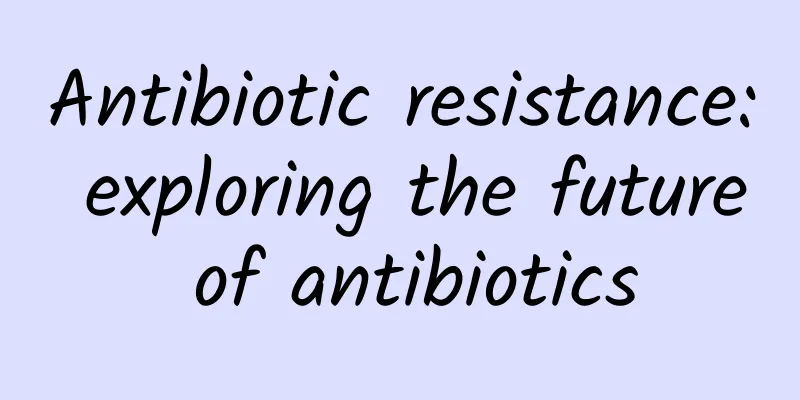Antibiotic resistance: exploring the future of antibiotics

|
Antibiotic resistance refers to the increased resistance of bacteria or other pathogens to antibiotics, making conventional antibiotics ineffective against these pathogens. This is a global health challenge that may lead to the failure of conventional antibiotic treatment and increase the complexity and mortality of infectious diseases. To explore the future of antibiotics, we need to adopt comprehensive strategies and measures, including the following aspects: 1. Rational use of antibiotics: Promote the proper use of antibiotics by medical staff and patients, including accurate diagnosis, compliance with usage guidelines, and non-abuse or overuse of antibiotics. This will help reduce overuse and misuse of antibiotics and reduce the risk of antibiotic resistance. 2. Antibiotic R&D and innovation: Increase investment in the R&D of new antibiotics, especially the development of antibiotics that are effective against multi-drug resistant bacteria. At the same time, encourage the exploration of new antimicrobial drug pathways, such as the discovery and use of natural products, the use of nanotechnology, phototherapy, and immunotherapy. 3. Multidisciplinary collaboration: Strengthen collaboration among medical professionals, researchers, government agencies and international organizations to jointly address antibiotic resistance. This collaboration can promote information sharing, experience exchange and strategy formulation, and improve the understanding and ability to address antibiotic resistance. 4. Support monitoring and research: Strengthen monitoring and research on antibiotic resistance, including tracking the prevalence of resistant bacteria, understanding resistance mechanisms, and evaluating the effectiveness of new strategies. This will help to timely grasp the changes and trends in resistance and provide a scientific basis for formulating corresponding intervention measures. 5. Education and publicity: Strengthen education and publicity for the public and medical staff to improve their awareness and knowledge of the rational use of antibiotics. This can be achieved through health education activities, provision of information resources, and strengthening of training. The future of antibiotics depends on the joint efforts and continued investment of the global community. Through the comprehensive application of the above measures, we can effectively slow down the development of antibiotic resistance and ensure the continued effectiveness of antibiotics in treating infectious diseases. In addition, it is also necessary to guide and encourage the research and application of alternative methods, such as the development of preventive vaccines, innovative irradiation therapy, bacterial localization therapy, etc., to reduce excessive dependence on antibiotics. |
<<: Tumor Rumors | Will staying up late cause liver cancer?
>>: Will a blood clot formed in the leg definitely lead to a pulmonary embolism?
Recommend
No more than 5 grams of salt per person per day
# Thousands of IPs Create Science Popularization ...
What causes bad taste in mouth? How to solve it!
The most embarrassing thing in life is: when you ...
How to take medicine when you have the flu? Teach you how to "get out of the flu season"
Text: Fan Ting, pharmacist of the clinical pharma...
[Medical Q&A] When do pregnant mothers need to supplement iron through medication?
Planner: Chinese Medical Association Reviewer: Zh...
How to say goodbye to your boss after resigning? Can I transfer my social security immediately after resigning?
Many friends don't know what to do with socia...
Why does the right side of my lower abdomen hurt when I push hard?
Sometimes I suddenly feel pain on the right side ...
Will I lose hair after giving birth?
The mother's body is in the recovery period a...
Causes of abdominal effusion in women
I believe everyone must know the importance of th...
What to do if vaginal discharge decreases?
Women are delicate flowers that need careful care...
Why is privacy dark? How to treat it?
Whether male or female, the private parts will be...
Effective methods for treating fever caused by milk accumulation
During breastfeeding, women have plenty of milk, ...
What to do if you have itching below during confinement
For new mothers who have just given birth, confin...
Orthotics help children recover
What are orthotics? Orthotics belong to rehabilit...
What are the results of endometrial pathology examination?
Endometrial pathology examination is a common gyn...
Symptoms of incomplete uterine evacuation of hydatidiform mole
In life, once a hydatidiform mole occurs, it need...









